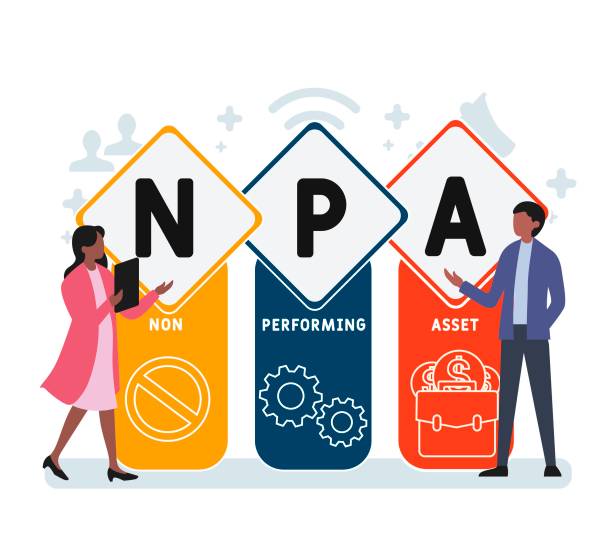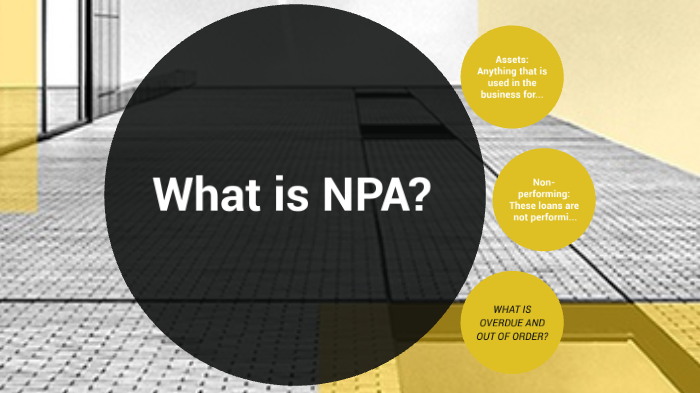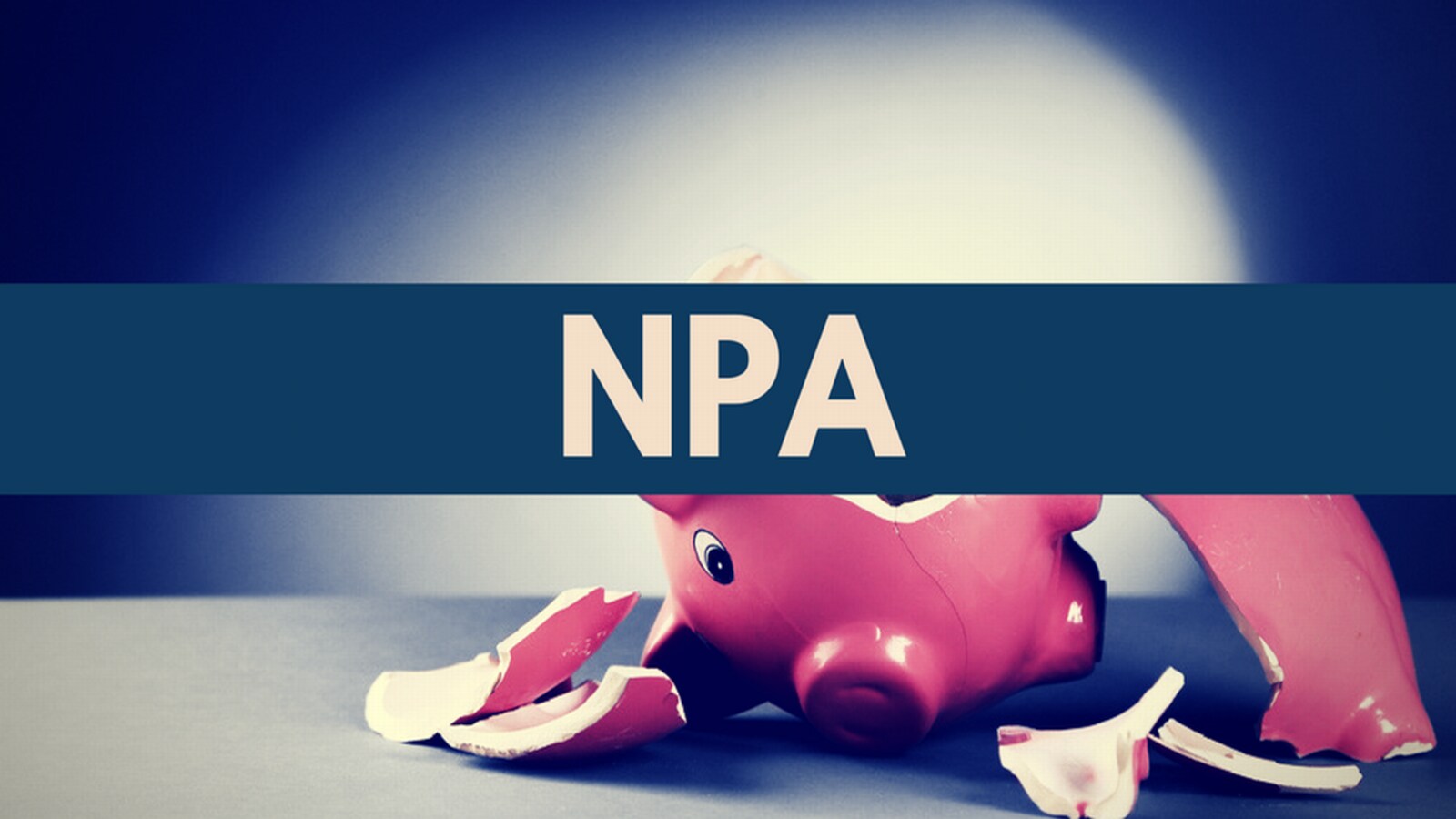
A non-performing asset, or NPA, as defined by the Financial Accounting Standards Board (FASB), is any financial asset that has demonstrated credit deterioration since it was purchased. This definition applies to intangible assets such as goodwill and other identifiable intangible assets that have become impaired or obsolete, as well as to loans and accounts receivable. To determine whether or not an asset or loan meets this definition, the following questions must be asked: Has the borrower failed to pay at least one scheduled installment on the debt? Is the borrower behind on any other payments of any kind?

What Is An NPA?
NPA’s are companies that are no longer making payments on their debt and non-performing assets are companies with defaulted debtors. If the cause of late payments are that the creditor cannot afford to pay back what they owe, or the creditors refusal to do so, then even if the creditor accepts some late payments, those payments are still not complying with their part of the contract. You’re going to want to consider a new classification if your original loan, as set on the contract, has been defaulted or if you haven’t been paid by a specified date. If so, you’ll want to look into a non-performing asset (NPA). In other words, a loan is considered to be in default when the lender doesn’t believe the borrower can pay off the loan, and he or she is also unwilling to do so.
What Are The Signs Of A Bank Loan Default?

When you find it difficult to communicate with a bank and are given flimsy excuses for why they cannot help you, that should be taken as a warning sign. Before going to the state regulators or suing your lender, it is important to know what the different types of bank loan defaults are. This is because a few possible signs of a bank loan default are if you are spending 50% or more of your monthly income on one debt that has not been repaid, if you have no savings at all, and if the bank does not approve your loan application. In this instance, a loan default occurs when you neglect to pay either the principal or the interest on a security or loan.
How Do Banks Recover NPAs?

When an asset can no longer produce enough revenue to cover the expenses, it’s considered a non-performing asset (NPA). Non-performing assets are most common in commercial loans, but they can also occur in personal and real estate loans. Usually, when this type of asset becomes an NPA, banks will sell it off to investors who specialize in such assets. There are three options when dealing with this type of loan try to work with the borrower to come to an agreement on your terms and purchase the asset on your own terms. you may wish to go for an amicable sale to avoid a total loss on your initial investment, depending on how willing you are to sustain a loss. banks must have a Board-approved Loan Recovery Policy, which could cover negotiated settlements, including One-Time Settlements, or short-term repayment of loan balances with recovery in NPA (Non-Performing Assets). When the bank suffers a loss due to unpaid loans, it can cover the loss either by charging a higher interest on new loans, or by offering a lower interest to its depositors.
Options For Dealing With An NPA Loan

If you are currently dealing with an NPA loan, it is important to know your options. You may have been contacted by collection agencies and pushed to make payments, but there is more than one way to handle your non-performing asset. Lenders are likely seeking out additional resources from you, such as guarantors or collateral. It’s best not to give up on your loan so quickly and to let your lender know that you want to work through these issues together. Remember that these entities have more information about NPA loans than you do, so don’t jump into any hasty decisions without consulting them first. Ways to recover with an NPA Loan:- Securitization, Asset Reconstruction, Enforcement of Security Interests.
Can I Still Repay My Debt On An NPA Property?
There are three steps to stop defaulting on your loan and to start recovering your NPA. To make it as easy as possible, we’ve broken down these steps into manageable chunks with helpful tips and hints along each step.
What happens if I can’t pay my installments?
1. You should get in touch with your creditor as soon as possible to let them know that you’re having trouble paying. The sooner you do, the more likely they are to work with you instead of taking legal action against you.
2. Explain why you can’t afford to make your payments – you may need to provide proof like bank statements or medical records, depending on what makes it harder for you to pay.
3. Ask if there are any other options available apart from foreclosure or repossession (see below). Sometimes creditors will grant repayment extensions or lower interest rates in exchange for faster payment schedules and larger monthly installments later on when your financial situation improves again.
How To Prevent A Default In Future And Start Recovery Now
A Non-Performing Asset (NPA) is a loan that cannot be fully repaid. A default occurs when you miss one or more payments on an NPA, and you have not worked out an alternative repayment plan with your creditor. When your loan is declared in default, it becomes part of your company’s non-performing assets, and must be listed on its balance sheet. However, there are steps you can take to avoid making late payments, reduce delinquency and/or prevent NPAs from happening at all.
Late payment penalties – In addition to regular interest charges, late payments can come with steep penalty fees that compound daily. These penalties can become especially costly if they’re added on top of already overdue accounts. Before setting up automatic payments, verify that your payments arrive on time and contact your lender about any problems as soon as you notice them. You might be able to get these fees waived or lower them by discussing alternatives with your creditor. For example, an installment plan lets you pay off a loan in fixed amounts over several months or years, rather than all at once.